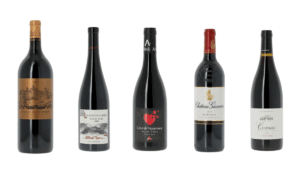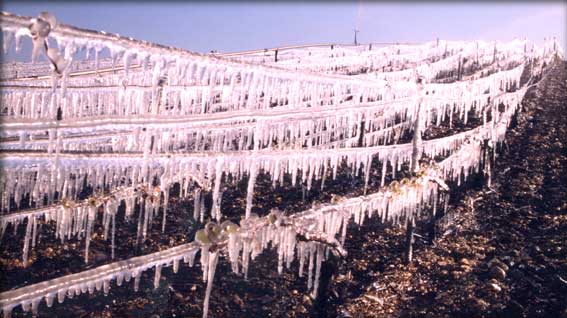
As you probably know, French vineyards have had to contend with spring frosts almost every year since the 2016 vintage. These episodes occur just as the vines begin to awaken from their winter dormancy when temperatures can still plummet below freezing, especially at night. Spring frosts can have devastating consequences, as young shoots are highly vulnerable at this stage of growth. So, what methods can help winemakers tackle them and safeguard their harvests?
Understanding spring frosts
As winter fades and temperatures begin to rise, young shoots emerge on the vines which were dormant all winter. However, when temperatures hover around freezing, water present in the plant’s green cells can crystallise, causing them to burst. This leads to irreversible damage, killing the buds and, in severe cases, wiping out an entire crop as the buds on the vines contain the DNA to produce the leaves and the flowers that eventually become grapes.
Not all frosts are the same, and understanding their differences is key to protecting the vines effectively.
- Radiation frosts occur when heat escapes from the soil at night, cooling the vineyard floor. In the morning, under clear skies and calm conditions, the air temperature at higher altitudes becomes warmer than at ground level. This phenomenon creates what is known as ‘white frost’, coating the buds in a delicate layer of ice.
- Advection frosts occur when a large mass of icy polar air (-5°C to -10°C overnight) sweeps across the vineyard, bringing freezing temperatures that are uniform across the area. Known as ‘black frost’, this does not form ice on the buds – instead, the cold is so intense that the tender shoots turn black and die almost instantly.
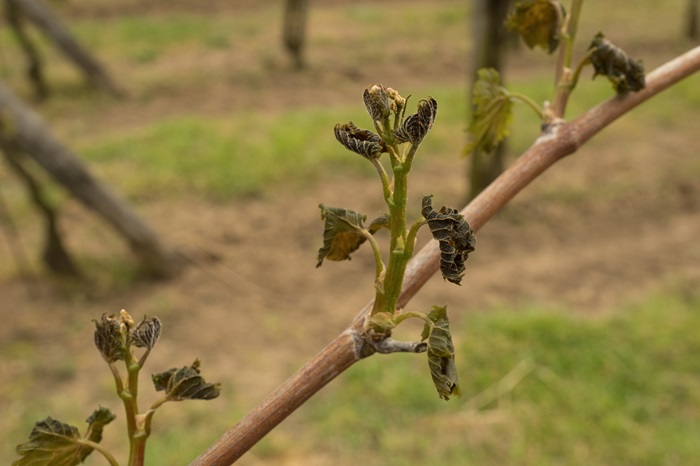
A threat that is becoming more common – Just look at Chablis!
Looking back, it’s clear that while climate change has likely intensified the frequency of spring frosts in French vineyards, some regions have battled this issue for decades. Take Chablis, for example – one of France’s northernmost appellations. Its location makes it particularly vulnerable to spring frosts, and between May and September, hailstorms can also pose a significant threat. In fact, early protection methods – some improvised, others more sophisticated – emerged as early as the 1960s, allowing winemaking in the region to reach the next level. Before winegrowers stated using these techniques in the region, it was not uncommon for entire harvests to be wiped out every two or three years!
Winegrowers’ techniques to tackle frost
1. Burning straw
One of the earliest techniques used in vineyards involves burning straw or hay. This collective effort involving winegrowers from a same village consists in creating a dense veil of smoke to limit the temperature rise that occurs too quickly at sunrise, thereby reducing the impact of the sun’s rays and promoting gradual soil warming. Pros: It’s cost-effective, involves a collective and unifying effort and is fairly easy to set up. Cons: This method may not be effective against all types of frost, the smoke can inconvenience locals, and it releases pollutants into the air.
2. Heaters, candles, or braziers
Widely used in vineyards, these devices aim to warm the surrounding air, typically raising temperatures by about 3°C around the vine bases. You’re bound to have come across photographs of this. Cons: They are labour-intensive, very expensive and have negative environmental impact. Recently, wood pellet heaters have been introduced as a less polluting and more efficient alternative to fuel, for example, though they are also very costly.
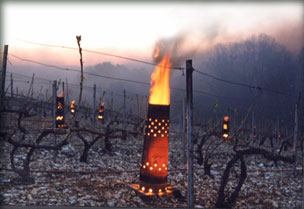
3. Stationary anti-frost towers
These systems can be installed in vineyards on a permanent basis, covering a radius of around five hectares (so they are often shared between winegrowers). Their purpose is to even out temperatures between the warmer upper air and the colder air at ground and vine level. Effective down to about -4°C, they also cause pollution, and are ineffective against black frost.
4. Sprinklers
This method involves spraying water onto the vines continuously when frost sets in. A cocoon of ice forms around the young leaves and buds, protecting them from the cold. As water freezes, it releases energy in the form of heat, preventing the temperature inside the ice cocoon from dropping below 0°C. Widely used in Chablis, this technique is suitable for all types of frost, down to -6°C/-7°C, although it requires a nearby stream and is very costly (often only the most prestigious plots are equipped). This technique is considered to be one of the most effective.
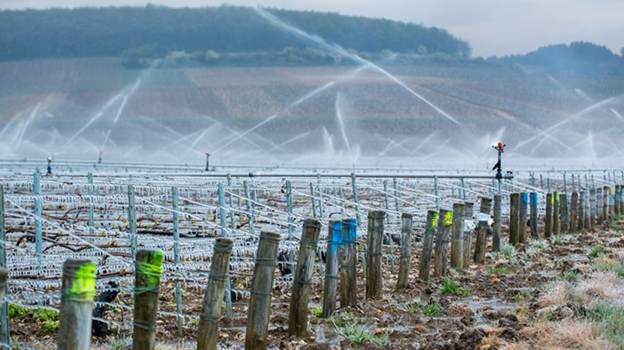
5. Mobile wind machines
Using the same technique as anti-frost towers, mobile wind machines are effective over a radius of 3 hectares of vines at -3°C. Compared with fixed towers, this type of installation is cheaper, pollutes less and is also less intrusive on the landscape. Unfortunately, once the wind reaches 8km/h, these turbines are ineffective against black frost.
6. Helicopters
Helicopters, with the power of their blades, can stir up large amounts of air quickly mixing the warm upper air with the cold air on the ground. This can raise temperatures by 3°C to 4.5°C, offering an effective defence against frost. However, this technique is not only dangerous, as flights take place at dawn when visibility is poor, it is also highly polluting and expensive. Despite this, helicopters can protect up to 25 hectares of vineyards at a time. One such helicopter flew over the Clos de Vougeot estate in 2021.
7. Sails and protective covers
This approach works much like a greenhouse, trapping warm air around the base of the vines and preventing it from escaping. As a result, the temperature under the cover remains higher than the surrounding air, offering protection against frost. Several approaches exist, including fleece covers, single-row tunnel systems, and agrivoltaics (the use of solar panels to provide shelter). While fleece covers proved effective against radiation frost, they were banned in all AOCs in 2003, as they were deemed to ‘alter the natural characteristics of the vineyard’.
8. Hot air cannons/convector heaters
The idea behind this technique is to distribute warm air among the rows of vines. Various systems exist, such as hot air cannons, convector heaters, and devices like Frost Buster or Frost Guard, all of which run on gas or fuel. They warm up and dry the air, providing protection against different types of frost down to -3°C over half an hectare. They can be less reliable in windy conditions. This technique is also expensive and highly polluting.
9. Heated cables
One of the more recent innovations in frost protection is the use of heated cables. These cables are installed along the vine trellises, functioning much like electrical resistors to emit heat. When temperatures drop, the cables warm up, safeguarding the vines from frost damage. This method is particularly well suited for vines trained in the Guyot system, as the fruiting cane is positioned close to the heated wire. This approach requires a good, stable and strong power supply.
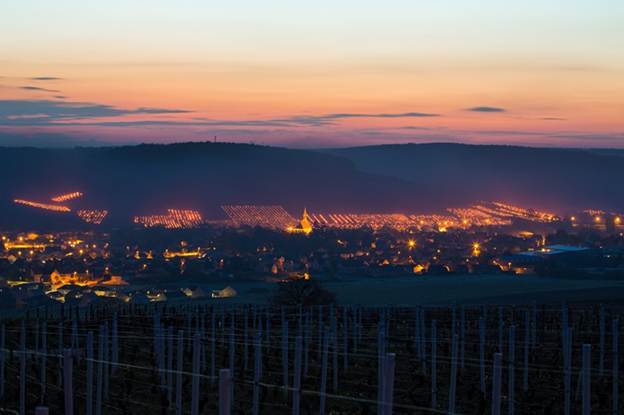
Each frost protection system comes with its own strengths and limitations – whether in terms of effectiveness, cost, or the labour required to set up, operate, and maintain it. As climate challenges continue to evolve, so too do new technologies. A topic well worth keeping an eye on…


